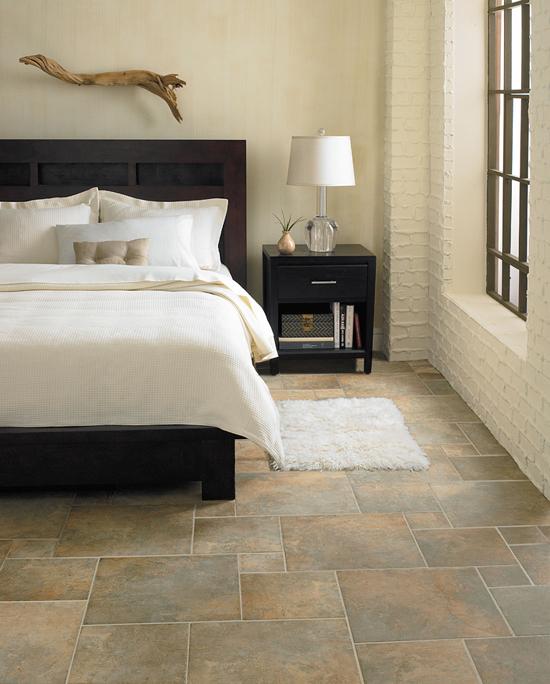Innovations & Trends 2010 & Beyond - February 2010
By Joe Amato
As consumer confidence returns and even grows, what are the key trends and innovations driving product development for the home? Although trend and innovation are often used interchangeably, we know that each concept is unique. Innovation translates ideas into value added products. Trend is an accelerating tendency to utilize pattern, color, texture, function or style in décor. So in essence, trends drive innovation. Applying innovation as a catalyst for developing products the consumer has not seen before, and doing so within the current trends, fulfills the potential of both.
Neither trend nor innovation is static. And with the advent of the Internet and social media, consumers have access to much more information than ever before, so the lifecycle of a trend is becoming shorter. The active portion of a trend cycle is now just three years, down from seven years in 1970. It is important for trends to be timely and relate to the consumer in a meaningful way, and the resulting products also must fit the consumer’s lifestyle and personal style. For 2010 there are three “big picture” issues impacting consumers and their lifestyle.
GENERATIONAL IMPACT
Generational change encompasses a lot. It starts with the impact of retiring Baby Boomers, which has just begun and will last into 2025. Just as the boomers, born between 1949 and 1964, have driven up housing demand in the past, the trend will reverse when boomers are age 65 and up. In addition, the size of homes will be smaller, resulting in downsizing spaces. These changes will affect the type of products purchased for the home. Products will be multi-functional with an emphasis on quality and performance.
Another generational segment is the coming-of-age of Generation Y. Born between 1979 and 1994, this young group cares more about what their friends think than what advertisers tell them. Social networks tell them what they need to know about products and performance. The Y generation has grown up with technology, which will have consequences around products and décor, and a green consciousness which focuses on recycling. They will demand recycled, reclaimed, repurposed and environmentally friendly products.
Generation X, which is composed of those born between 1964 and 1979, are “consumers in demand” over the retiring boomers and the inexperienced Generation Y. These 30 to 45 year olds have come of age, and they have also risen to upper-level jobs. They can afford top quality products, even luxury products, but they will be very selective in their purchases.
Although there are distinct generational shifts, all are faced with lifestyle decisions around today’s economic realities. This new economy has created a sense of fiscal responsibility and consumers are not buying things they can’t afford. With so much shifting and changing in the world, the new economy compels us to take stock of what is meaningful in our lives—our history, our customers, and our traditions—and to emphasize it in our décor. The result is a new depiction of tradition that is found in the New Classic category. New Classic translates into a return of the best selling styles of the past 25 years but with a definite makeover. In flooring, traditional classic looks of oak, maple, hickory, slate, and marble continue to grow in popularity, but take on an updated look with intentional character, detail, and color. And from a color standpoint, with the return of the classic style, sophisticated neutrals will also grow in popularity. The neutrals are no longer washed out but have distinctive color direction from light to mid-tone values. Warm greys and black and white are also an integral part of this neutral palette.
GOING GLOBAL
One World is the second broad influence impacting consumer lifestyle and home décor. It addresses how individuals have come to see their place in the context of a global world. A primary motivator behind a One World view is found in the mixed ethnicity of Americans. Attitudes are shifting from exclusionary to inclusionary, and inspire consumers to focus outward, on the rest of the world.
As we look at trends and styles for 2010 and beyond, we must understand the background of culture and ethnic crafts with an emphasis on their handmade qualities. In flooring, gloss levels, surface textures, pattern, and color have varied to reflect the variety of ethnic styles. The global influence of color in the home resurrects bright jewel tones and spice colors to complement styles from Asia to Africa. Our global awareness of culture and style offers a personal connection that includes a need to have eco-responsible living with innovative, environmentally responsible products.
ACCELERATION
The final big-picture influence is accelerating change. Things are moving so quickly today that it can be difficult to stay on top of the next big idea or product. To stay current, good design thinking and technology is extremely important. Consumers have come to understand good design, and it’s become so accessible in recent years that they also expect it everywhere, and at every price. For example, the exploration of form and function has revitalized the Contemporary style in so many home fashion categories. In flooring, shapes of wood, tile, and laminate are no longer relegated to squares and planks. Form and function take on a new look and the combination can make the product appear modern and a bit edgy. Colors range from sophisticated neutrals to fashion forward charcoals and brown tones. Metals are also still strong and focus on stainless steel, black stainless, gold, and burnished copper.
Just as big picture issues drive lifestyle influences and style categories, technology is a major contributor to product development. Whether the technology is repurposed or completely new, applying innovation to technology, and then combining it with trend, can have game-changing ramifications for any product. Thus the trend-technology-innovation trio can help provide more realistic design, expanded color palettes, and enhanced performance features to customize the consumer’s personal taste and style.
Copyright 2010 Floor Focus
